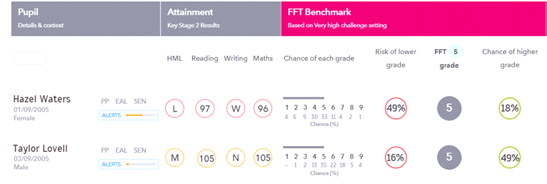Attachment Informed Mark Book
When I was 18 I packed my bags and travelled half-way round the world to take up a job teaching English at Jinyun Middle School, Lishui District, Zhejiang province, PR China. With next to no teaching experience under my belt, save for a two-week TEFL course at SOAS, it was quite the baptism of fire(water)*. On arrival, all I knew was that my job was to help the people in the class in front of me (all 60 of them) to improve their spoken English. And so, as I was thrust in front of class after class, I found myself putting together a somewhat rudimentary mark book. A mark book that looked like this:
* This is a good joke.
Looking back, I am intrigued by the fact that, even as a fresh-faced 18-year-old, it seemed obvious to me that what I should do is find out what my students could do and think carefully about what specific types of task and level of challenge would help them get better. What is interesting is that, a decade into my professional career, my mark book bears almost no resemblance to that (very) basic formativism. Instead, it is a sea of numbers, letters, codes and (very) generic learning targets. I know that my students do best when I take time to see them - when I know what makes them tick and where they fall down. It is at those moments that I can ask a question; or re-structure a paragraph; or push a book into a hand; and make a real difference to their learning. It seems somewhat paradoxical that, while our external summative outcomes are so much harder to predict, we have become more and more focused on summative assessment of students work: attaching 1-9 grades to termly assessment seems farcical, given that these grades are the culmination of two years of hard work, multiple examinations and a ‘tailored approach’.
Therefore, this year my mark book will be entirely a formative experience. Of course, I will keep the summative records that are required by my school’s teaching and learning policy, but, more than ever before I am going to keep records of my students interests, their strengths and their areas for development. As much as possible, I want my students to be seen by their teacher, and their educational needs met. Going forward, I hope that this will be the first step in helping me develop a more attachment-informed pedagogy in my classroom.




Comments
Post a Comment